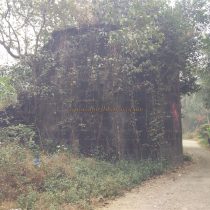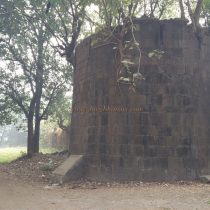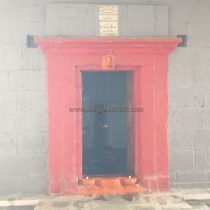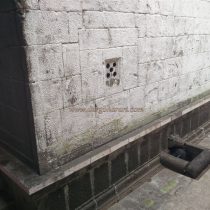KARADE
TYPE : GADHI
DISTRICT : RAIGAD
HEIGHT : 0
GRADE : EASY
The town of Rasayni near Panvel is famous for its rapid industrialization, but a small fort on the banks of the Patalganga River here beckons to trekkers like us. We had no idea that a fort existed in this industrialized city, and because of this, these monuments are being forgotten. One such fort, which has gone into oblivion due to lack of historical records, is the “Chauburji” (four bastion) fort on the banks of Patalganga River in Karade. To visit this fort we have to reach Karade Khurd village near Rasayni. The village is 50 km from Mumbai and just 20 km from Panvel. During the medieval period, the villages along the Patalganga River flourished. During the late Peshwa period i.e. during the second Bajirao Peshwa period, this fortress was built along the river Patalganga but it was not used much.
...
This fort in the possession of the Kulkarni here was bought in an auction by the Vaidya family after independence and it is their private property but they do not detain anyone to visit the fort. This rectangular shaped fort is approximately 0.30 acre in area and there are four bastions at the four ends of the fort. All these four bastions are neatly built entirely out of stone. The bastion has carved holes for firing guns. The 10-12 feet high portion of the ramparts is made of stone and the upper part is made of bricks. Due to neglect, the fort has largely fallen into disrepair and the main gate on the west has been completely destroyed. The inner part of the fortress has a large amount of vegetation and while walking through it, one can see the square Wada (mansion). On this porch there are large number of carved slabs. Ongoing to the inner side of the bastion, one can see a large amount of carvings. Although there is no water facility in the fort, there is a square-shaped well adjacent to the eastern bank. Apart from this, there is a circular shaped well on the outer side adjacent to the southeast bastion of the fort. There is a facility to draw water from this well from the bastion and for this purpose this bastion is built in a semi-circular shape. From this tall bastion and from the bank, the Khapri pipe (mud pipe) has taken the water to the Wada (mansion). I have never seen such system to extract water and supply it in anywhere in Maharashtra while visiting around 650 forts and fortresses. At Yashwantgad Fort in Ratnagiri district, there is a facility to draw water from the well from the bastion, but this bastion is circular and the well is in the trench, not adjacent to the bank. The water from both the wells outside the fort is still in use today. Half an hour is enough to walk around and explore the entire fort. At some distance from the fort, there is a temple of village deity Garmata in a beautiful environment by the lake. Built over 500 years ago, this temple with tiled roof is a must-see for the heritage of Konkan. A Ghat is built on the banks of the river Patalganga in the village and there is a Shiv Mandir of the Peshwa period here. Some letters are engraved in the stone on the walls of this temple.
© Suresh Nimbalkar

















